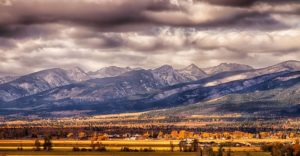Montana sees $72 million of spending in state from ‘Yellowstone’ series
Posted: May 2, 2022Source: The Bozeman Chronicle

The report produced by the University of Montana’s Bureau of Business and Economic Research showed that Montana’s economy with “Yellowstone” resulted in 527 more jobs, $25.3 million in annual personal income, and $85.8 million in additional gross receipts to Montana businesses and organizations. It also resulted in $10.6 million of revenue to the state government. The MEDIA Coalition of Montana and the Paramount Network paid for the study.
“The production activities of ‘Yellowstone’ season four in Montana supported jobs and income well in excess of its own economic footprint, making Montana’s economy larger and more prosperous than it otherwise would have been,” said Patrick Barkey, Bureau director, in a press release. “The high-paying nature of the production-related jobs, and the considerable demand for locally produced goods and services, are the main reasons why the economic impacts were so sizable.”
The filming also added 527 additional permanent jobs to the state, not including the 624 Montana residents who were employed during the filming as extras. The additional 527 jobs were spread out in various industries, including 120 in the film industry itself, 66 in construction, 47 in retail trade and 85 in the food industry. The average salary for the 527 jobs was $51,171 — well above the state average compensation per job of $46,020 per year, according to the report. And the 116 Montanans who worked on the show, not including extras, made around a combined $3.1 million and worked an average of approximately 11 40-hour weeks.
The report comes as the Interim Revenue Committee considers drafting legislation to raise the state’s film tax credit. Montana is one of more than 30 states that currently offers some form of tax credit to studios in return for filming within their states, according to the report.
In 2019, the legislature passed the MEDIA Act, which set the state’s film tax credit at $10 million. During the last legislative session, House Speaker Wylie Galt, R-Martinsdale, pitched a deal to eliminate the cap, but by the time the bill was signed, the cap was only raised to $12 million, and film industry stakeholders say that cap must be further increased to maximize the film industry’s potential in Montana.
“We’re not asking for no cap, we’re asking enough for us to be able to tell Montana stories and live here and make a good living, which is happening. But we’re at this really sweet point where if we go a little higher than those of us (in the business) can do it all the time,” said Lynn-Wood Fields, owner of the Montana Media Center, which provides job training to Montanans looking to work in the film industry.
Fields being able to start a successful job in the film industry is one of the economic factors not included in the report, she said.
“I am one of those people that is not in the study. But I am one of those support entrepreneurs that is benefiting from ‘Yellowstone’ … and I will say that ‘Yellowstone’ season five has been really instrumental in hiring more Montanans than ever before in filmmaking,” she said.
Another benefit to “Yellowstone” filming in Montana that was not included in the economic impact study, but was mentioned in the report, was the free advertising Montana gets from the show being filmed in the state.
“The visual depiction of our state that increases exposure and awareness of our physical landscape, culture and history to audiences that are potentially global. While it is difficult to quantify, the image of Montana that is projected to mass audiences through film production is arguably important in selling the state as a place to visit or even relocate,” the report read.
While the film industry’s impact on rising housing costs in Montana was not explored in the report, Barkey said anything that increases Montana’s growth could further exacerbate the problem.
“If housing markets continue to be supply constrained, then anything that adds to growth could presumably impact prices, but I would say that that is an issue with housing policy and not with growth per se,” he said. “To state it another way, would you say that an economic downturn is ‘good’ because it might relieve pressure on housing markets? I wouldn’t.”
